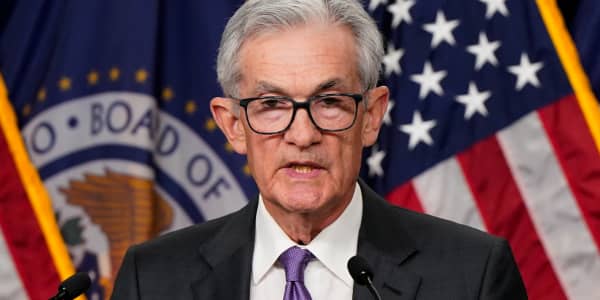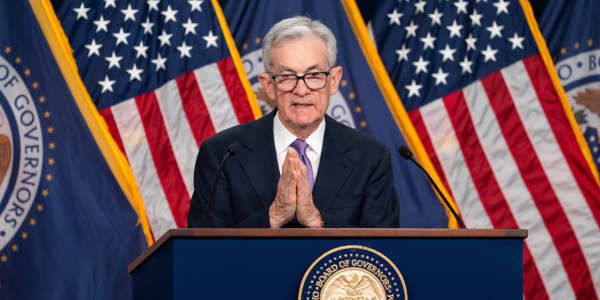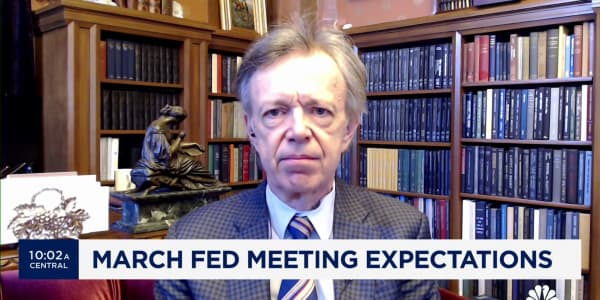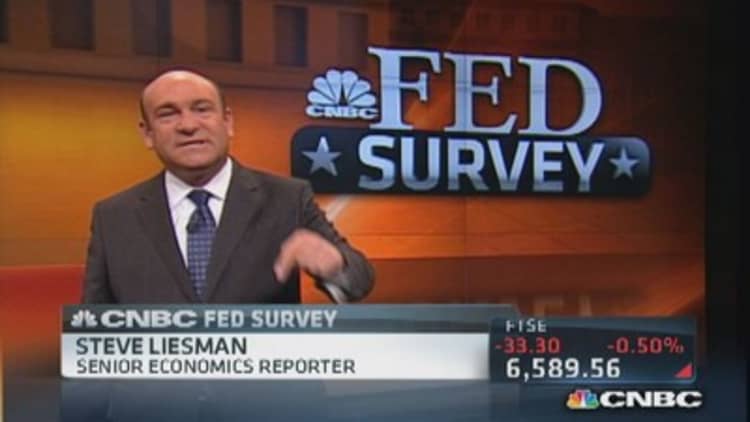
The market is agreed: It's Yellen and a taper.
The latest CNBC Fed Survey finds that in the absence of Larry Summers, 88 percent of market participants expect President Barack Obama to nominate Vice Chair Janet Yellen to be the next Fed chair.
Most of the September survey was conducted Thursday and Friday, but the question about the next Fed chair was asked again on Monday, a day after Summers withdrew his nomination.
Former Fed Vice Chairman Donald Kohn barely registered in second with just 6.3 percent of the votes.
Regarding policy, the September survey of 47 economists, money managers and Wall Street strategists found they expect on average a nearly $15 billion taper, with a plurality expecting the taper to be announced on Wednesday after the Fed's two-day meeting.
(Read more: Fed taper likely to be announced this week: El-Erian)
Respondents expect the reduction in asset purchases by the Fed will focus far more on Treasury purchases than mortgage-backed securities. The Fed has been buying both assets as part of its most recent quantitative easing program launched in September 2012 designed to drive down long-term interest rates, reduce unemployment and spur economic growth.
Respondents believe that 72 percent of the taper will come from reduced Treasury purchases and 28 percent from MBS.
The $14.6 billion taper average represents an increase from an earlier survey this month of $12.6 billion. But it's a decline from the July survey, ahead of the last Fed meeting, of $19.2 billion.
About 48 percent of respondents expect the taper to occur this month, and more than half see it happening by October, about unchanged from the July survey.
The taper is hands down the single most clearly telegraphed move in the history of monetary policy.Guy LeBasJanney Montgomery Scott
The current QE3 program is seen ending in August. Market participants believe the taper is largely priced in, with respondents saying that 81 percent of the impact is already discounted in Treasury and mortgage markets and around 70 percent is in the stock market.
Guy LeBas of Janney Montgomery Scott wrote in response to the survey, "The taper is hands down the single most clearly telegraphed move in the history of monetary policy."
But there was some disagreement about whether this was the right policy for the Fed. Joel Naroff of Naroff Economic Advisors said the economic data do not support a decision to taper. "(The economy) is still not strong enough for the Fed to declare victory. Instead, concerns about market damage and inflation are driving the decision making."
(Read more: Summers withdrawal removes pressure to cut Republican deals)
Market participants appear to be bracing for higher interest rates and only small gains in stocks. The yield on the U.S. 10-year note is seen hitting 3.4 percent by next summer. In the June survey, participants thought the benchmark 10-year yield would hit only 2.8 percent by that time.
Stocks are seen only about 3 percent higher next June, and participants actually see a slight decline by year-end for the S&P 500 stock index to 1,685.
(The economy) is still not strong enough for the Fed to declare victory.Joel NaroffNaroff Economic Advisors
The survey respondents, however, have not done a good job predicting the market rise for much of this year. Their forecasts continue to chase the market higher.
Respondents are sticking to their forecasts for stronger economic growth next year. Gross domestic product is forecast to grow 2.6 percent year-on-year in 2014, up from a 2 percent forecast for 2013.
The probability of recession remains at a low 16.9 percent, one of the lowest three readings since the question began being asked in 2011. The probability is up a bit from the 16.2 percent reading in July.
The market outlook for the Fed funds rate next year is more dovish right now than the Fed's own outlook.
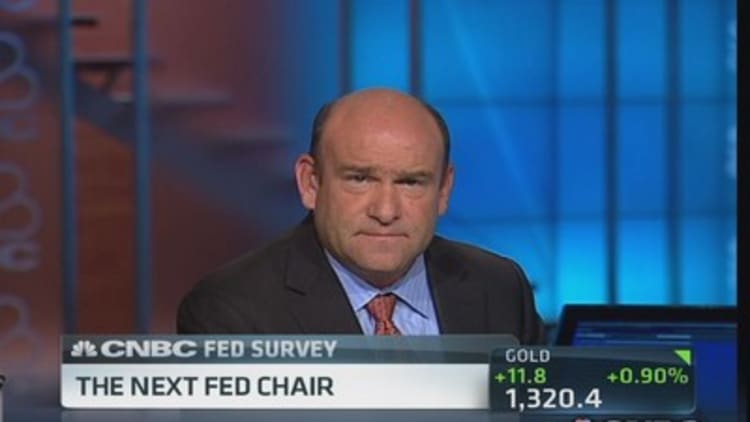
Respondents see the funds rate at just 21 basis points by the end of next year, while Fed officials put the average at 43 basis points. The difference is entirely accounted for by four Fed hawks who see a much higher funds rate than the average of the Federal Open Market Committee.
By 2015, the difference all but disappears with market participants seeing the funds rate at 92 basis points compared with an FOMC average of 87.
Meanwhile, a slight 51 percent majority of participants think the Fed will maintain its guidance to only consider interest rate hikes when the unemployment rate hits 6.5 percent. Forty-four percent believe the Fed will lower the guidance, with the average response forecasting 6 percent. (The government recently reported a 7.3 percent jobless rate for August.)
On political and military issues, market participants see little chance for military action in Syria but seem braced for a debt ceiling fight similar to the last one. Two-thirds of respondents neither expect nor support U.S. military action against Syria. Any military action, however, is estimated to produce a 5 percent hit to equities.
About half of respondents see a debt ceiling fight that mirrors the last one, and a quarter say it could be worse. On average, however, there is a less than 10 percent chance seen that the debt ceiling is not raised and the U.S. defaults.
—By CNBC's Steve Liesman. Follow him on Twitter @steveliesman.



